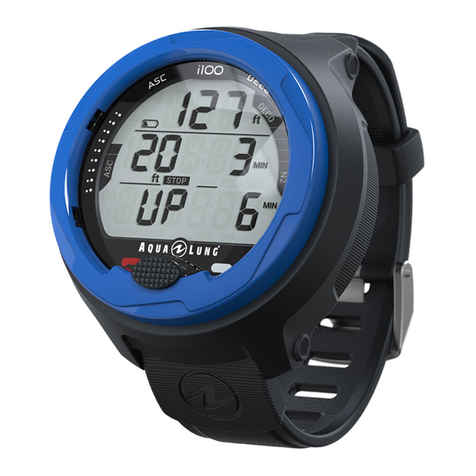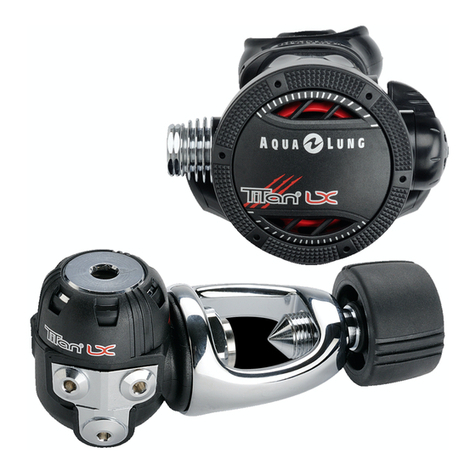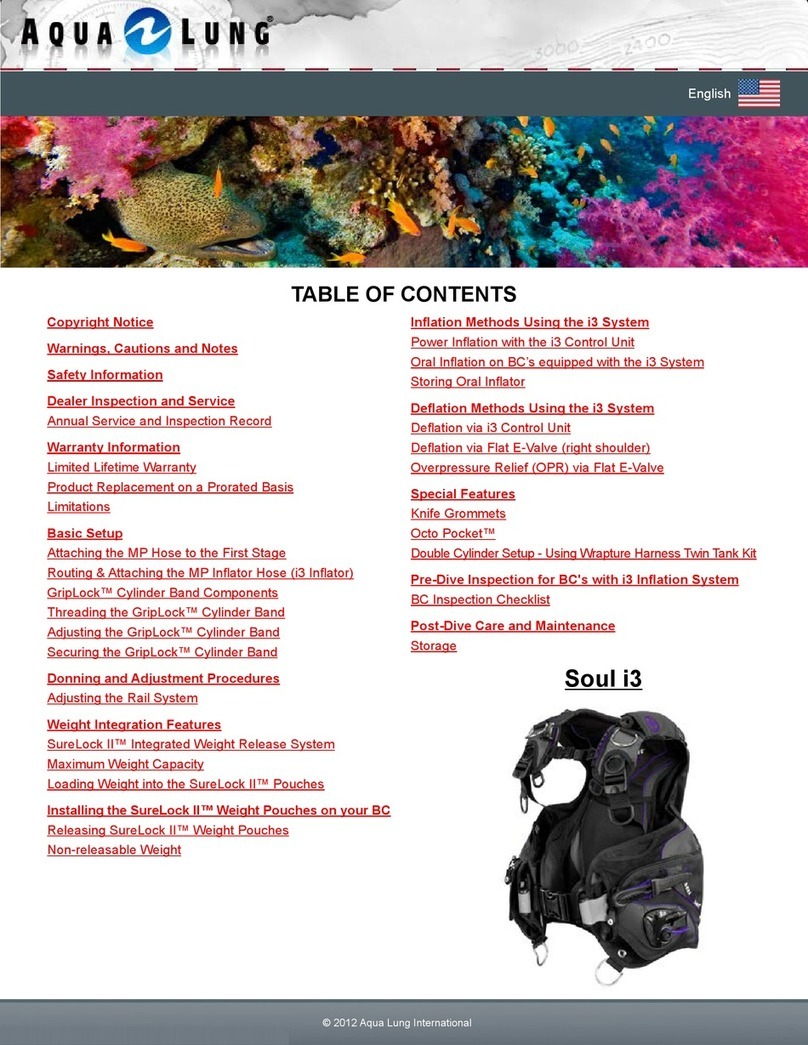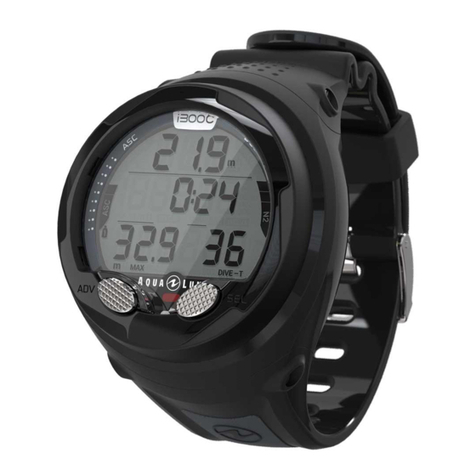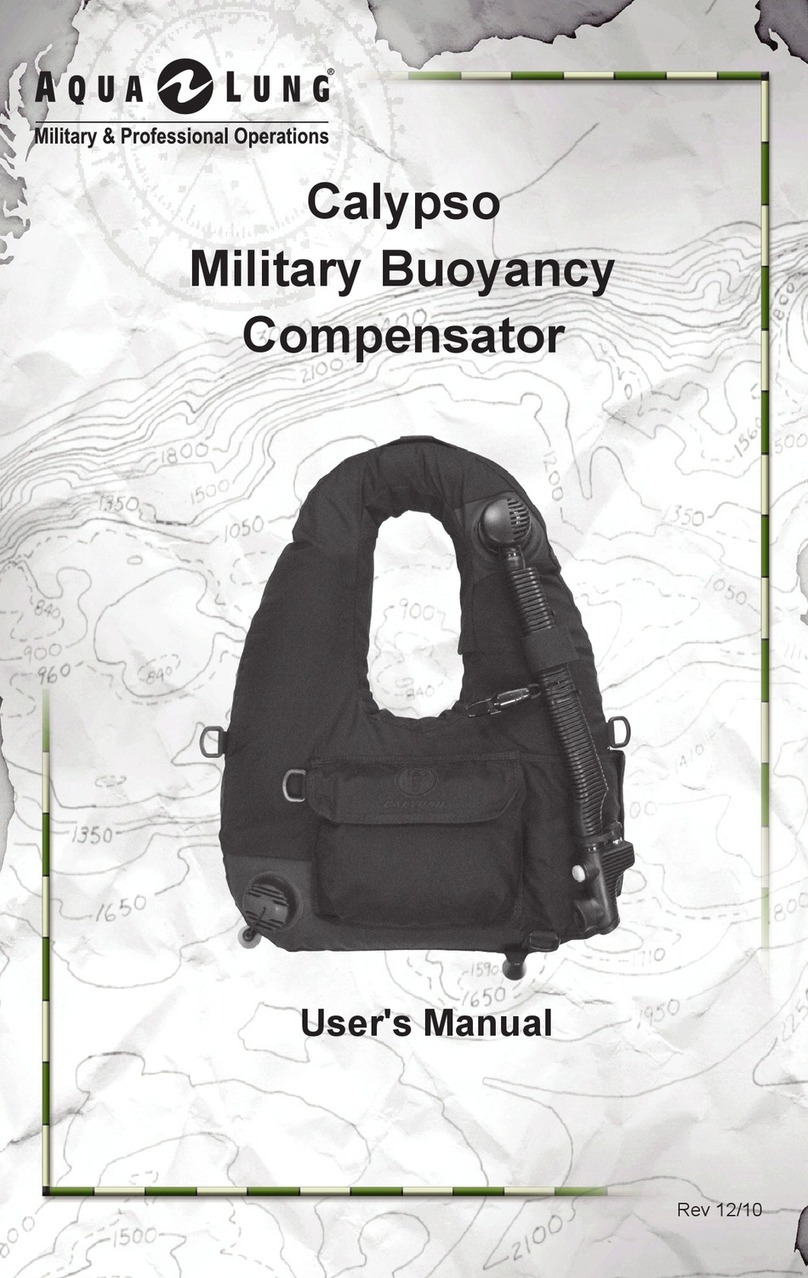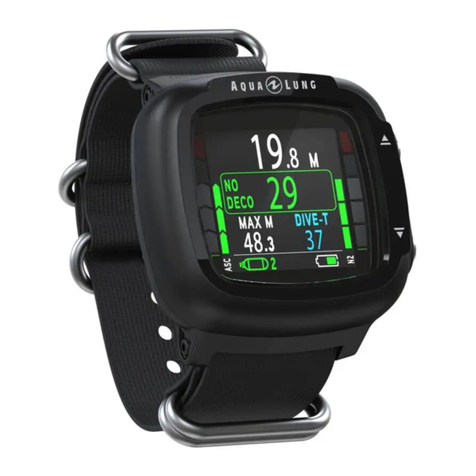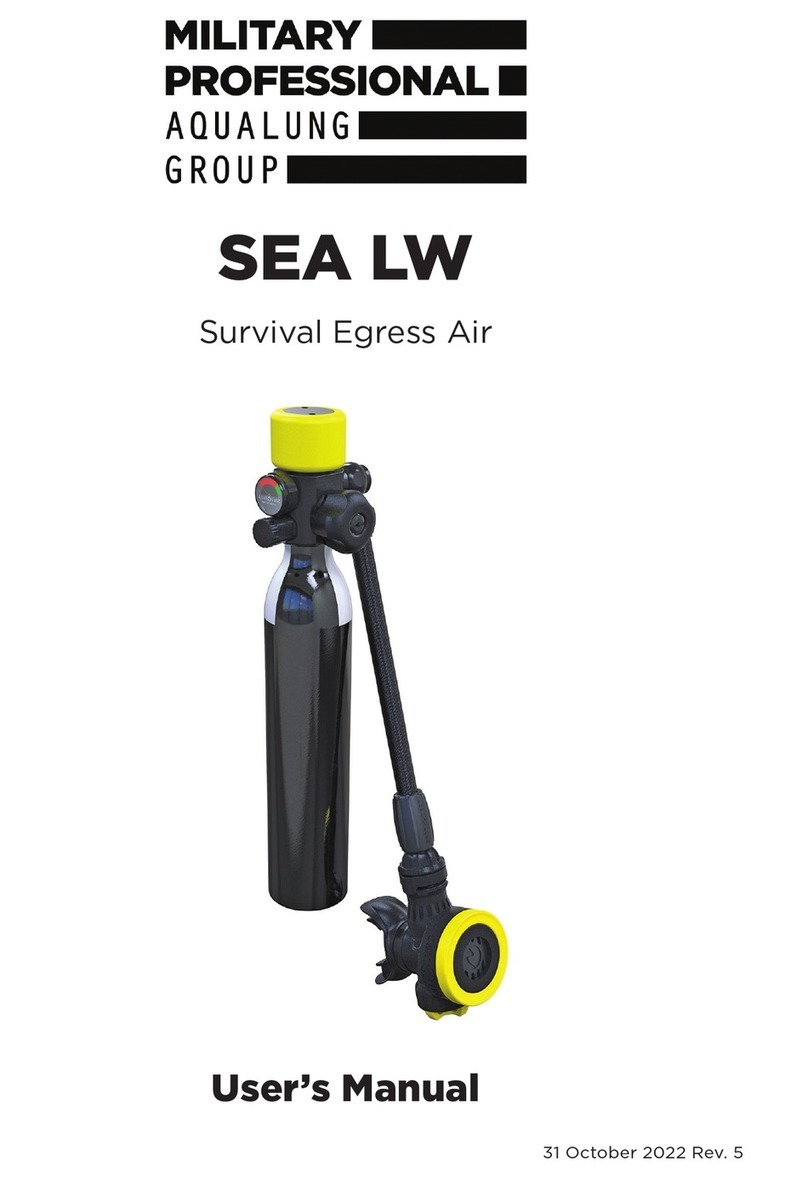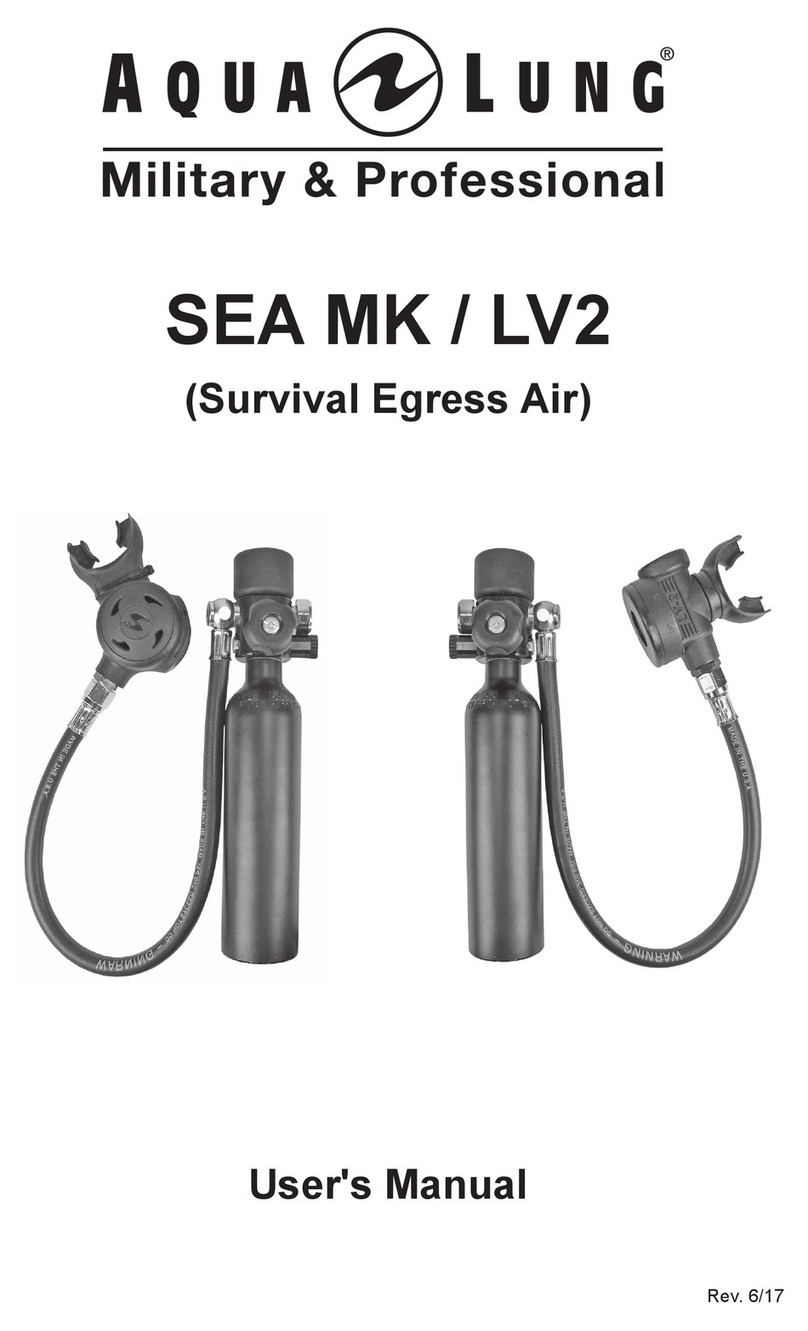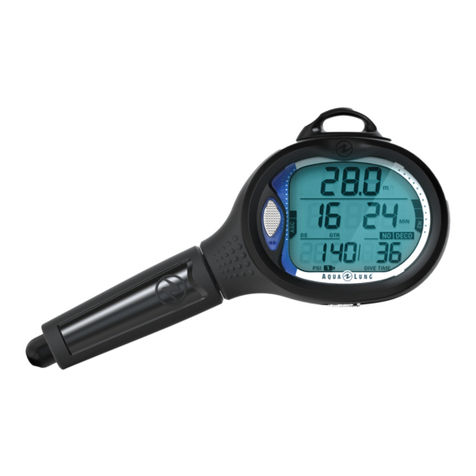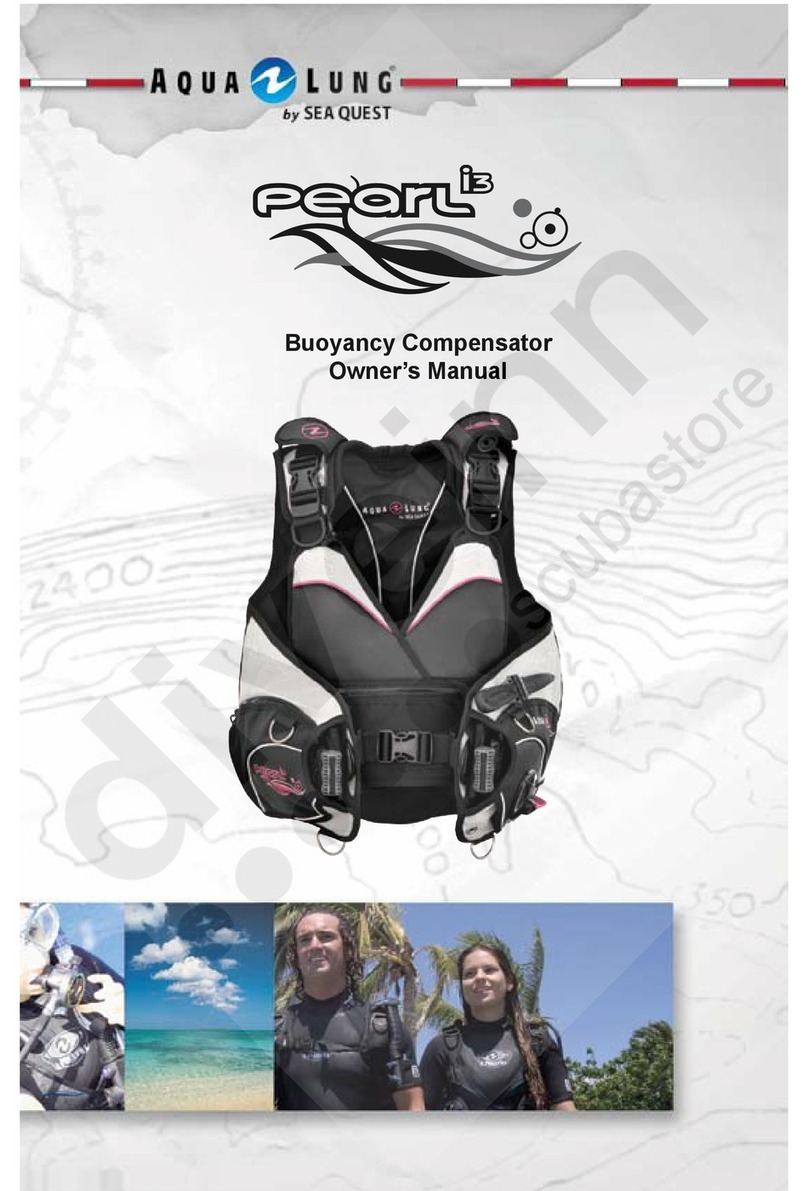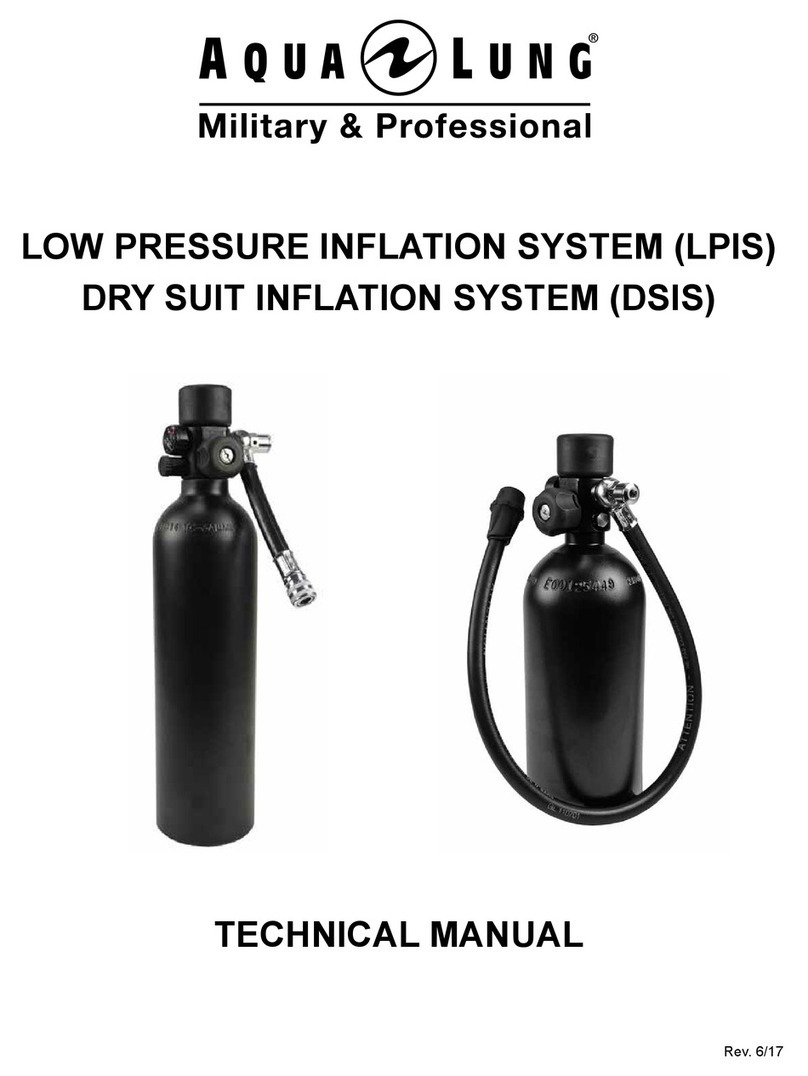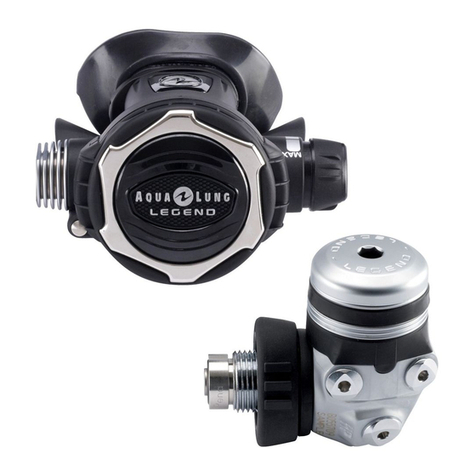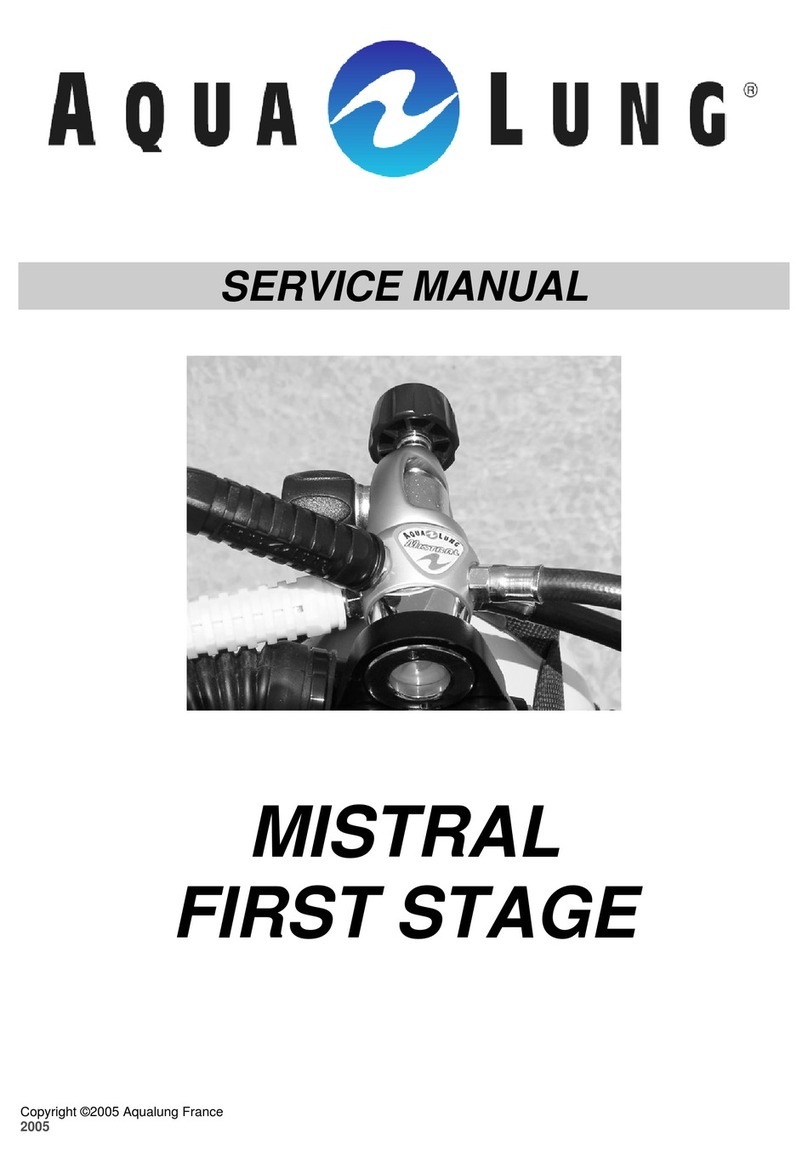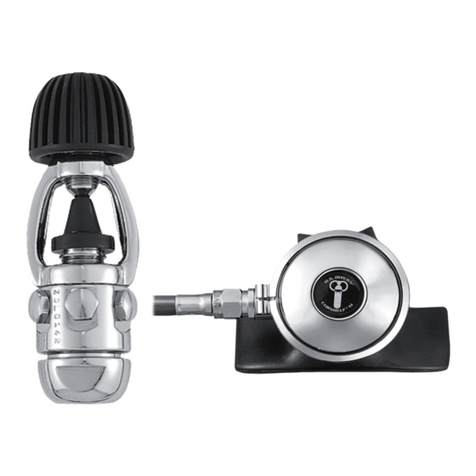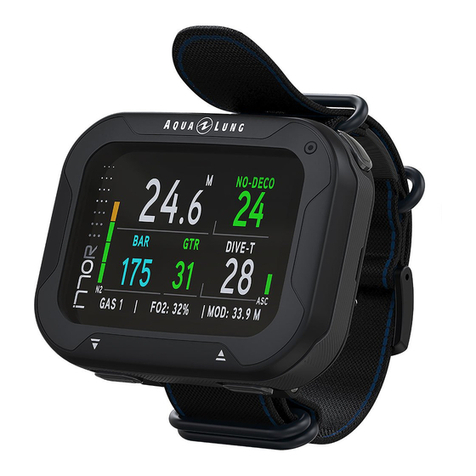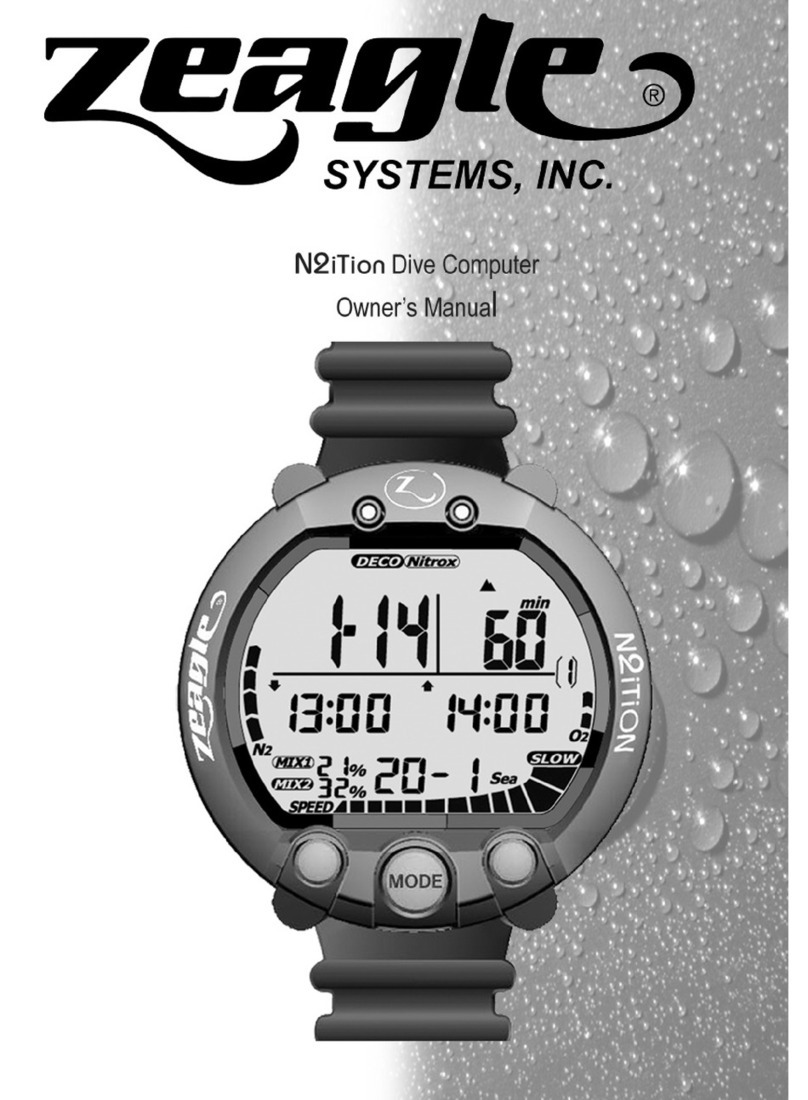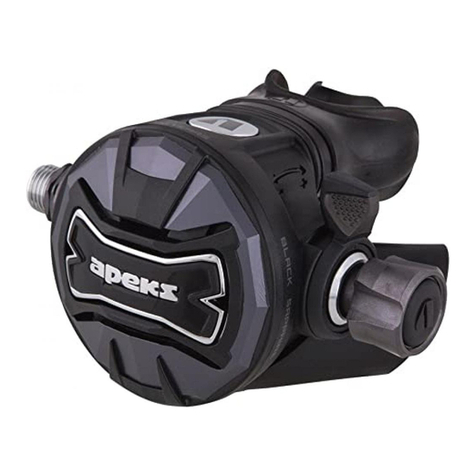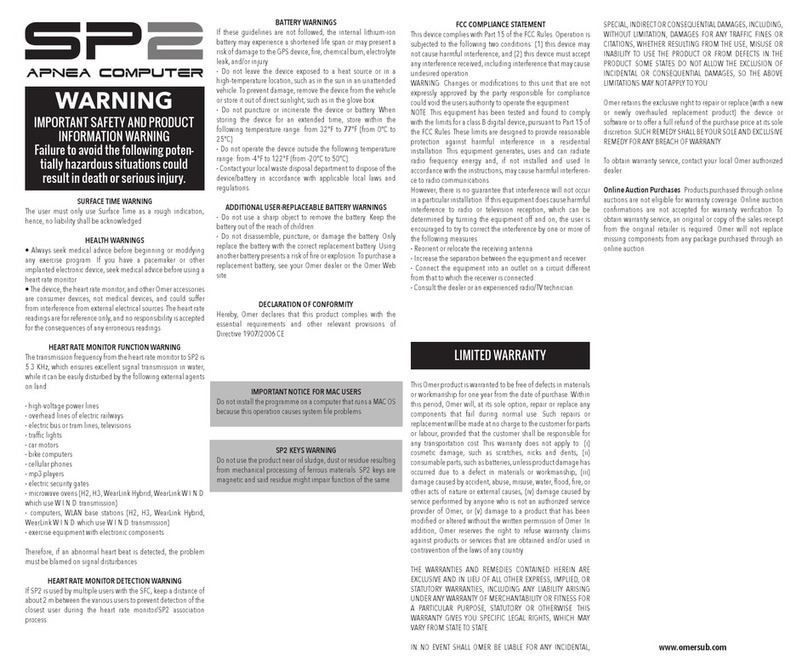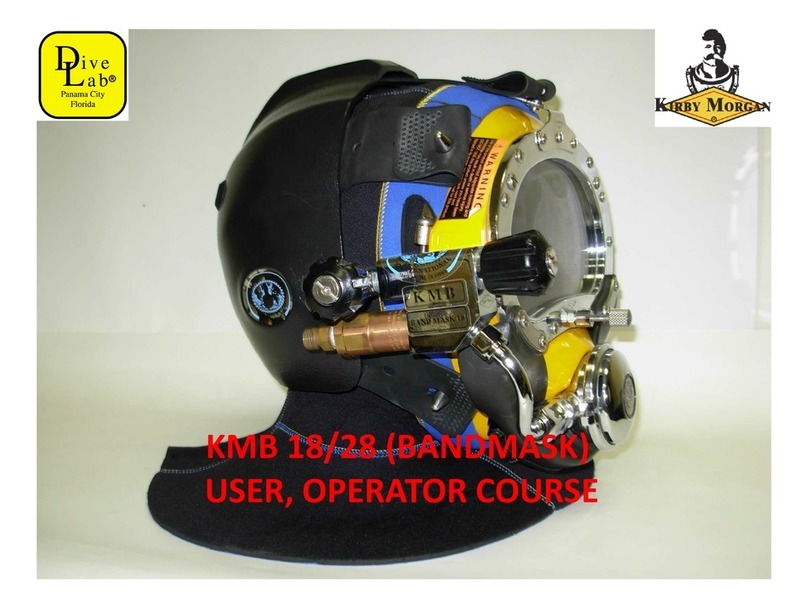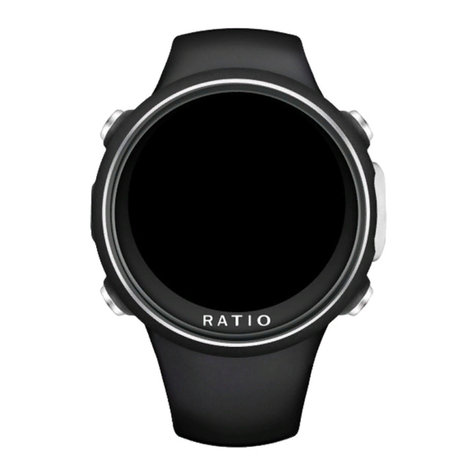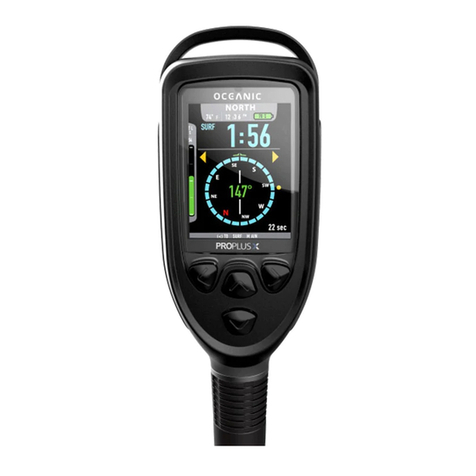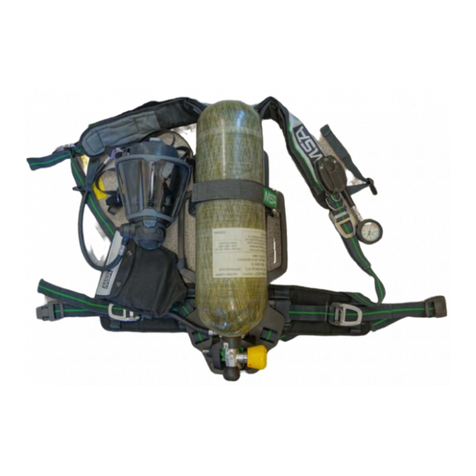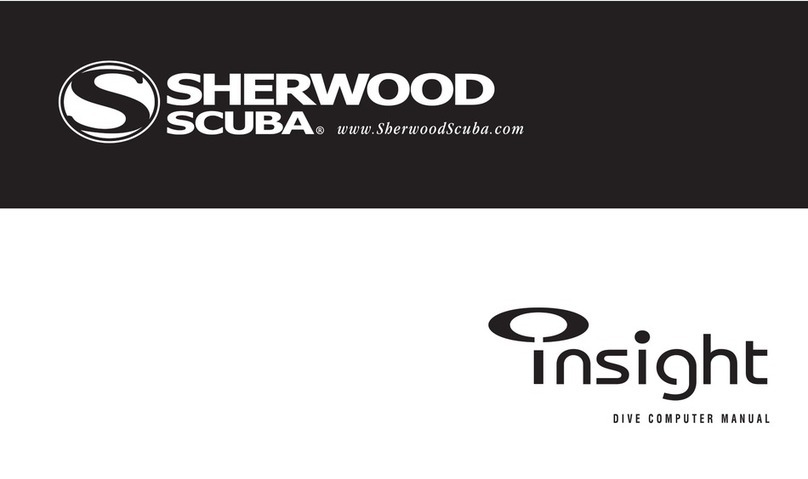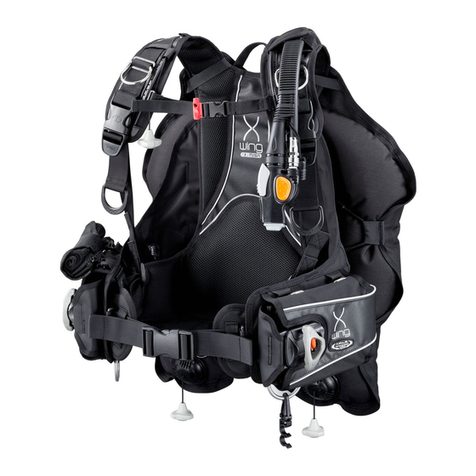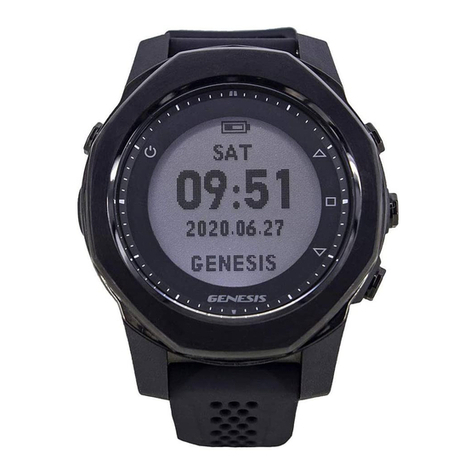
Oral Ination
The oral inator is a secondary means for adding air to the otation cell. It may
be used when you are unable to, or do not wish to add air with the power inator.
1. Before depressing the large grey oral ination/deation button, exhale a small
amount of air into the mouthpiece in order to purge any water that may be trapped.
this will reduce the amount of water that may be introduced into the bc.
2. After the water is purged and without removing the mouthpiece from your
mouth, immediately depress and hold down the large grey oral ination/deation
button and, with the same breath, continue to exhale into the mouthpiece.
Release the oral ination button immediately after exhalation in order to stop
the release of air from the otation cell.
3. Repeat this procedure until the proper buoyancy is achieved.
NOTE: It is important to prevent sand and other debris from
entering the mouthpiece. these objects can contaminate the valve
mechanism and, under certain conditions, prevent it from closing
completely. if this should occur, operate the oral inator several
times while shaking it underwater. if this action is not successful,
terminate the dive until the situation is remedied.
DEFLATION
Deation by the Relief Valve
The Relief Valve provides the primary convenient means for exhausting air
from the BC. The valve opening located at the top of the BC must be above
the body when submerged for venting to occur. This is best achieved by
moving toward an upright position when venting air.
Normal deation of the BC should be accomplished by utilizing the Trim
Grip™, as well as dump valves. Please refer to your BC owner's manual
for model specic valve locations. Air can also be vented manually through
the mouthpiece by pressing the oral inate/deate button.
WARNING: The Airsource does not come equipped with an over
pressure valve. it must be rigged to a BC that features an over
pressure valve. if you have questions regarding the features of
your bc, ask your local authorized Aqualung® dealer.
WARNING: If during your pre-dive check, or at any time during
the dive you nd that the Relief Valve will not fully close and
seal or will not fully open and vent air, DO NOT continue the
dive. Continuing the dive under these circumstances could
result in serious injury or death.
2. Releasing the Trim Grip™/body closes the valve.
NOTE: It is not necessary to exert an excessive downward pull to activate
the Relief Valve. When you pull on the Trim Grip™, you will feel the hose
stretch, allowing the exhaust valve to open. The travel of the valve is limited
to less than 1/4". Pulling harder will not increase the air ow. Maintain a
downward pull until the desired buoyancy is reached. It is not necessary to
raise your arm overhead when using the Relief Valve system.
1. To activate, simply pull downward on either the Trim Grip™ or the Airsource
body. (Figure 10). This action transmits force through internal stainless steel
cables and opens the valve at the shoulder to allow air to vent from the BC.
Oral Deation
The oral ination/deation valve is secondary means for venting air from the
BC. Most users vent air through the dump valves. However, you may nd it
easier to expel the last portion of air remaining in a nearly empty BC by utiliz-
ing the oral ination valve.
1. Move into an upright position so that you can hold the Airsource above the BC.
2 . With the Airsource in the left hand, raise the assembly to a position nearest
the surface of the water.
3. Depress the oral ination/deation button allowing air to exhaust in small
increments until the desired buoyancy is achieved.
4 . Release the button allowing the valve to close.
NOTE: Do not hold the oral ination/deation button open after all
the air has been exhausted. Doing so may allow water to enter the
BC. Also, whenever inating or deating your BC, be sure to make
small but frequent adjustments. This will minimize the amount of
water entering the BC.
BACK UP SECOND STAGE REGULATOR
The Airsource is a high performance, pneumatically balanced second stage
regulator, and it operates the same as a standard second stage regulator.
To breathe, put the mouthpiece in your mouth. Purge the water by either
pressing the purge button, or exhaling slowly and continuously. You should
test the breathing performance of the Airsource before each dive.
WARNING: The procedure to deal with an Emergency Out-of-
Air situation should be reviewed before every dive. Make sure
your dive buddy is familiar with the operation of the Airsource
and what role it plays in an out-of-air situation.
In the event of an emergency air sharing situation, the assisting diver should
offer their primary second stage to the diver requesting to share air. The Air-
source then becomes the primary regulator for the assisting diver.
While using the Airsource as your second stage regulator, all ination
and deation procedures as outlined in this manual are still applicable.
While breathing normally from the Airsource, push the power inator button to
inate the BC. For oral ination, breathe in normally through the mouthpiece,
then depress the inate/deate button and breathe back out through the
mouthpiece. Release the oral ination button immediately after exhalation in
order not to allow the air to escape from the air cell. Instead of the air escaping
through the exhaust valve, the air will be diverted into the air bladder.
Ination
Deation
The Trim Grip™ is exclusively designed to allow deation of the BC through
the Relief Valve while breathing from the Airsource. The Trim Grip incor-
porates dual activating cables for the Relief Valve. This, combined with the
angled mouthpiece, allows you to pull downward on the Trim Grip hose
without removing the Airsource from your mouth. The increased hose length
allows for greater range of head movement.
PRE-DIVE INSPECTION PROCEDURES
For your safety and to ensure the longest life of your equipment, we suggest
the following checklist to be followed each time before you enter the water:
1. Visually inspect the Airsource and the attached hoses for signs of deteriora-
tion or damage. If such signs are present, do not dive with the equipment.
2. Slowly open the tank valve to allow air to bleed into the regulator gradually.
3. Conrm the MP inator hose is attached securely. Press the second
stage purge button on the Airsource to verify sufcient air ow. The regulator
should not continue to ow after the button is released.
4. Place the Airsource in your mouth and take several slow, deep breaths.
The regulator must deliver an adequate volume of air without requiring
excessive effort. If you are in doubt regarding this test, consult your scuba
instructor or an Aqualung®retailer for advice.
5. Close the cylinder valve and purge the remaining air in the regulator. Try
to inhale normally from the second stage mouthpiece on the Airsource. This
should create a vacuum in the second stage, and there should be no signs
of air owing into the regulator case. Air ow may indicate a leak at the
mouthpiece, diaphragm, or exhaust valve. If a leak is detected, do not use
the Airsource until it is repaired.
6. If the Airsource passes the above predive check, reopen the cylinder valve
in preparation for the dive.
7. Once you have donned all your gear and are ready to enter the water,
always have your dive partner perform a nal inspection cross check of the
Airsource and all other gear.
4
